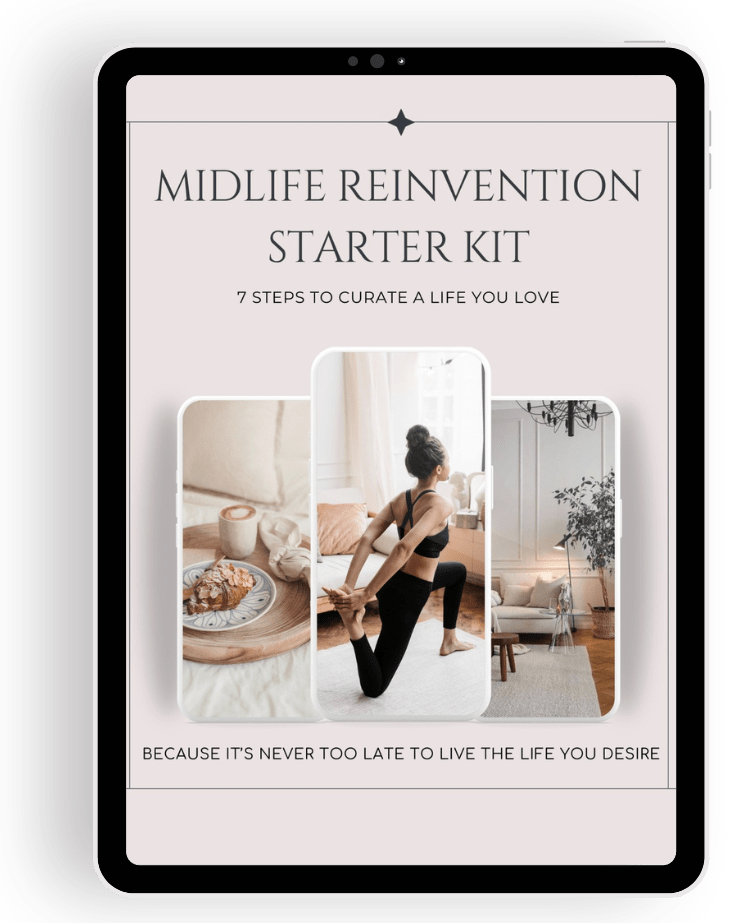Introduction: Should You Fast During Menopause?
Intermittent fasting (IF) has been praised for its benefits in weight loss, blood sugar regulation, and longevity – but is it suitable for women going through menopause?
Many health experts promote fasting as a powerful tool for metabolic health. However, others warn that fasting increases cortisol (the stress hormone), disrupts blood sugar, and can lead to overeating later in the day. Given that menopause already affects our stress response and metabolism, this raises an important question:
Does intermittent fasting support or hinder hormonal balance in menopause?
This guide will explore:
- ✔️ How fasting impacts menopausal hormones
- ✔️ The latest research on intermittent fasting for women in midlife
- ✔️ How to fast safely (if you choose to do so)
- ✔️ Alternatives to fasting that may be better suited for menopausal women
By the end, you’ll have the tools to decide whether fasting is right for you and how to nourish your body in a way that feels sustainable, energising, and balanced.

How Menopause Affects Your Metabolism & Blood Sugar
Before diving into fasting, let’s first look at how menopause changes metabolism and why blood sugar stability is key.
1. Increased Insulin Resistance
During menopause, declining oestrogen levels reduce insulin sensitivity, making it harder for your body to regulate blood sugar. This can lead to:
- Frequent energy crashes
- Increased cravings for sugar and carbs
- Weight gain, especially around the middle

2. Higher Cortisol Levels
Menopause is a naturally stressful transition, and fasting further increases cortisol. High cortisol can:
- Raise blood sugar levels
- Cause fat storage (especially in the belly)
- Disrupt sleep and increase anxiety

3. Muscle Loss & Slower Metabolism
Oestrogen helps maintain muscle mass, but as levels decline, muscle loss accelerates, slowing metabolism. This means:
- Losing weight becomes harder
- Skipping meals (without enough protein intake) can worsen muscle loss
These changes mean that how and when you eat becomes more important than ever.

The Science Behind Intermittent Fasting & Menopause
Intermittent fasting (IF) is an eating pattern that cycles between periods of eating and fasting. The most common approaches include:
- 16:8 method – Fast for 16 hours, eat within an 8-hour window.
- 14:10 method – Fast for 14 hours, eat within a 10-hour window.
- 5:2 method – Eat normally for 5 days, then consume fewer calories (500-600) for 2 days.
Potential Benefits of IF in Menopause
- Improved Insulin Sensitivity – Fasting can lower blood sugar levels and help manage insulin resistance.
- Reduced Inflammation – Some studies suggest fasting lowers markers of inflammation.
- Gut Health Benefits – Fasting allows the digestive system to rest, potentially improving gut health.
However, the research on fasting for menopausal women is limited, and there are potential downsides.
The Downsides: How Fasting Can Backfire in Menopause
Increases Cortisol & Stress Response
Fasting can be a stressor on the body, increasing cortisol levels. Since menopausal women already struggle with stress regulation, fasting may lead to heightened anxiety, sleep issues, and stubborn belly fat.
Disrupts Blood Sugar Balance
Skipping meals can cause blood sugar crashes, leading to:
- Low energy
- Mood swings
- Increased cravings

May Lead to Overeating Later in the Day
Restricting food for long periods can lead to binge eating or excessive hunger, making it harder to control portions and maintain balanced eating.
Can Accelerate Muscle Loss
If fasting leads to not consuming enough protein, it may worsen muscle loss – further slowing metabolism.
Who Should & Shouldn’t Try Intermittent Fasting in Menopause?
IF Might Work for You If:
- ✅ You have good blood sugar control (i.e., no frequent energy crashes or intense sugar cravings).
- ✅ You naturally prefer not eating breakfast or delaying meals without feeling fatigued.
- ✅ You prioritise protein intake and strength training to maintain muscle mass.
IF Might NOT Work for You If:
- ❌ You struggle with high stress, anxiety, or poor sleep.
- ❌ You have intense cravings, energy crashes, or blood sugar issues.
- ❌ You find yourself overeating after fasting periods.
- ❌ You are prone to binge eating or have a history of disordered eating.
If fasting feels stressful or unsustainable, it’s okay to focus on balanced meals instead of rigid fasting windows.
My Personal Experience with Intermittent Fasting & Menopause
I have been contemplating intermittent fasting for a while, especially with all the positive claims about its benefits for metabolism and blood sugar regulation. However, after extensive research and tuning into my body’s needs, I realised that fasting for long periods doesn’t work well for me.
One major issue I encountered was nausea if I didn’t eat within a couple of hours after waking up. If I wake up at 6 or 7 AM, I need to have breakfast by 9 AM – otherwise, I start feeling unwell. When I experimented with the 16:8 intermittent fasting method, my eating window ended up being from 8 or 9 AM to 4 or 5 PM. This meant I had to stop eating after 5 PM, which became increasingly difficult.
Another challenge was my irregular sleep patterns. Sometimes, I fall asleep by 9 PM, but on other nights, I don’t sleep until 2 AM. This inconsistency made it hard to maintain a rigid fasting schedule.
After listening to my body, I decided to stick to eating three balanced meals a day, with a 4-5 hour gap between each meal, ensuring I get enough nourishment without prolonged fasting. To support my blood sugar levels naturally, I’ve also started drinking clove water, as studies suggest that cloves can help improve blood sugar control.
This balanced, flexible approach has worked far better for me than strict fasting, keeping my energy stable and my cravings under control.
How to Fast Safely in Menopause (If You Choose To)
If you want to experiment with intermittent fasting, here’s how to do it in a way that supports your hormones and well-being.
1. Start with a 12-Hour Overnight Fast
Instead of jumping into 16-hour fasts, begin with a gentle 12-hour fast (e.g., 8 PM – 8 AM) to allow your body to adjust.
2. Choose a Flexible Approach
Instead of rigid fasting, listen to your body. If you feel tired or irritable, break your fast earlier.
3. Focus on Protein & Healthy Fats
During eating windows, prioritise protein (chicken, eggs, fish, tofu) and healthy fats (avocado, nuts, olive oil) to keep blood sugar stable.
4. Don’t Skip Meals If You Feel Unwell
If fasting causes dizziness, fatigue, or cravings, it’s a sign your body needs regular nourishment.
Alternative to Fasting: Blood Sugar Balancing Meals
If fasting doesn’t feel right, focus on blood sugar balance instead:
- 🥑 Eat every 3-4 hours to avoid blood sugar crashes.
- 🥩 Prioritise protein & healthy fats at every meal.
- 🥗 Avoid processed carbs (white bread, pasta, sugar) that spike insulin.
- 🚶♀️ Go for a walk after meals to help lower blood sugar naturally.
This approach supports hormonal balance without extreme restriction.
Case Study: How Sarah Transformed Her Energy Without Fasting
Sarah, 52, tried 16:8 fasting to lose weight. Within a few weeks, she noticed:
- 🚨 Increased cravings & energy crashes
- 🚨 Feeling anxious & irritable in the mornings
- 🚨 Difficulty sleeping at night
She decided to switch to a blood sugar-balancing approach instead:
- ✔️ Eating 3 protein-rich meals a day
- ✔️ Walking for 15 minutes after meals
- ✔️ Having healthy snacks (e.g., nuts, Greek yoghurt) when needed
Within a month, her energy stabilised, her cravings reduced, and she felt more in control of her body.
Journaling Prompts: Is Fasting Right for You?
- 📝 How do I feel when I skip breakfast? Energised or fatigued?
- 📝 Do I experience energy crashes or strong cravings during the day?
- 📝 Does fasting feel stressful or empowering?
- 📝 How can I better support my hormones without extreme restriction?
Final Thoughts: The Best Approach for You
There is no one-size-fits-all approach to intermittent fasting in menopause.
- If fasting feels good, keep it gentle and flexible.
- If it worsens cravings, stress, or energy levels, focus on balanced meals instead.
✨ Your Next Step? Try one small change this week – whether it’s prioritising protein, spacing out meals, or starting with a 12-hour fast.
💬 How do you feel about fasting? Have you tried it? Let’s chat in the comments! ❤️

Feel free to sign up to my Friday Morning Love Note HERE! This isn’t just a newsletter - it’s your invitation to pause, reflect, and realign with you. Every week, we’ll journey together to uncover the small, meaningful shifts that will help you design a life that feels uniquely and beautifully yours. Each week, I’ll deliver fresh intentions, uplifting tips, and simple shifts to inspire purposeful, creative living.




